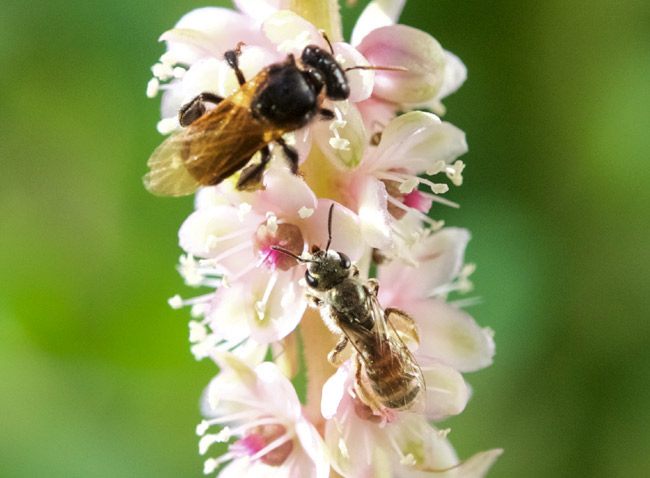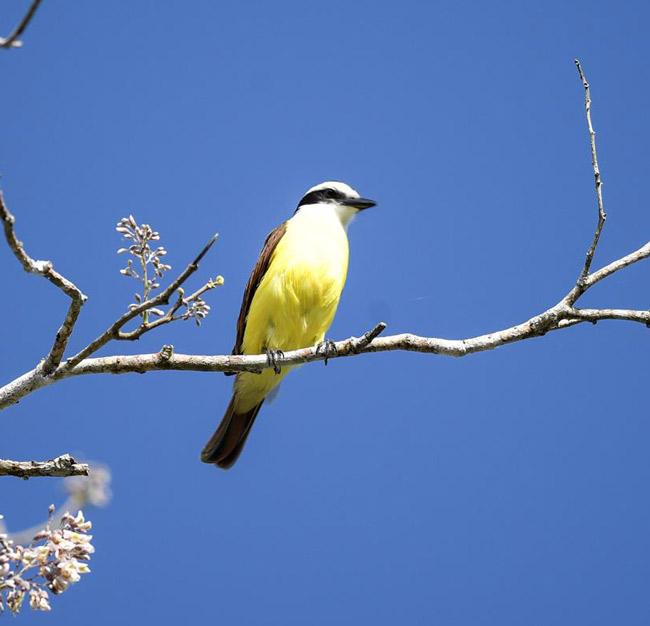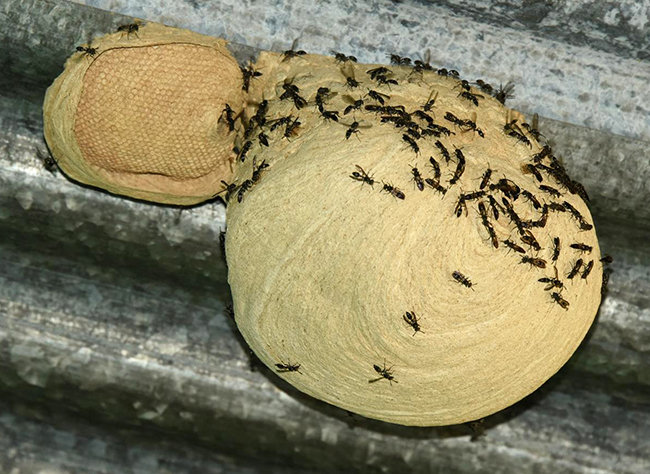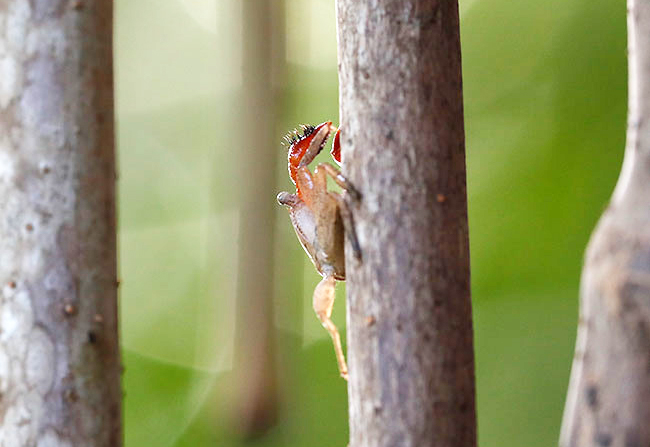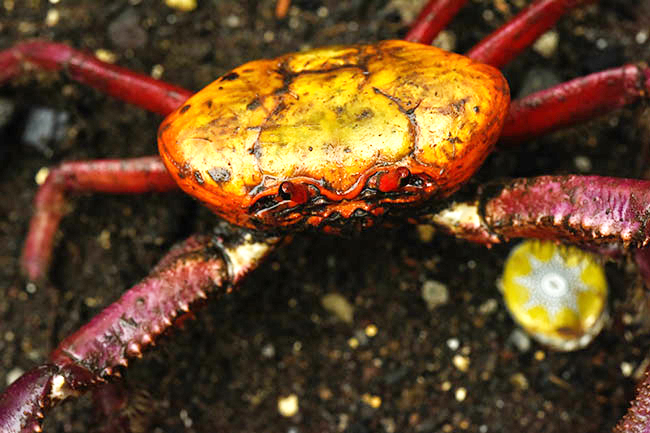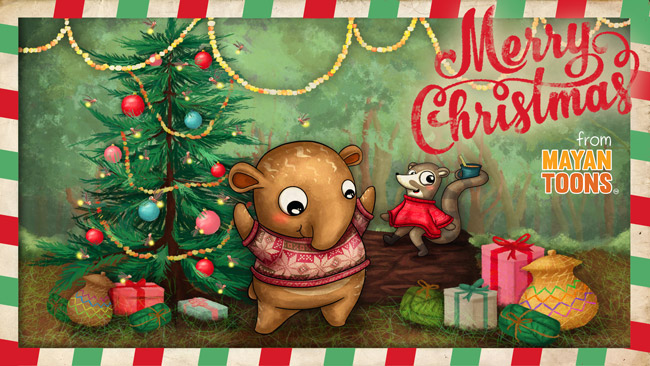Posted May 20, 2018
Pollinators are important for all people around the world. So we at FLAAR (USA) and FLAAR Mesoamerica (Guatemala) are developing projects to assist local people to understand how many creatures are pollinators (much more than just bees).
That said, bees are still the most common and most noticed. So although lots of beetles, flies, butterflies, moths, bats and arboreal mammals such as mico leon (Potos flavus) are also pollinators, it is most realistic to start the message of Save the Bees, Butterflies and Bats.
Here are snapshots of a jaboncillo flower stack with two different bees or bee-like insects. As you will see with the next post, mosquitos (or mosquito-like flies) also visit the same flowers.
We noticed this several months ago on other flowers: many species of bees plus the mosquito-like insects were all happily seeking nectar on the same flowers at the same time of day. The plant’s botanical name is Phytolacca icosandra.
Since the flowers are blowing in the wind it’s tough to focus before the pollinator flies away, but here are the snapshots we were able to get. Nikon D5 camera, AF-S Micro NIKKOR 60mm f/2.8G ED lens. Photo by Nicholas Hellmuth, FLAAR.
Two species bee pollinators around FLAAR garden.
Photo by Nicholas Hellmuth, FLAAR photo archive of flora and fauna of Mesoamerica.
Posted May 8, 2018
Bird are waiting for you at the Parque Nacional Yaxha Nakum Naranjo. I can remember seeing the antbirds enjoying their feast of insects trying to flee the invading army ants (the antbirds can hear the noise of thousands of insects hopping, jumping, flying to try to escape the massive army of ants). The antbirds simply have the bugs jump into their mouths.
This experience with antbirds comes from having lived at Yaxha for five annual seasons (1970-1974) while preserving the ecosystem by working to create a national park here. FLAAR also worked together with archaeologist Miguel Orrego to map the entire site of Yaxha (and update the Harvard map of Nakum).
In mid-April 2018 I returned to Yaxha to visit with the park administration team, to donate printed material for their museum and for schools, and to discuss how FLAAR could help the park’s program to raise awareness about protecting the fragile eco-systems of the seasonal Neotropical seasonal rain forests of this part of Mesoamerica.
Bright-colored birds were hopping from branch to branch in the trees over the hotel Ecolodge El Sombrero, adjacent to the entrance to the park. Inside the park, there were reports of the King Vulture, a gorgeous bird that is almost never visible elsewhere. The very knowledgeable park ranger (Teco) knew all the birds and precisely where to find them and what hour of the day.
If you sign up for a boat trip, then you can see and photograph all the waterbirds. So there is a lot to see at Parque Nacional Yaxha Nakum Naranjo in addition to the Mayan temple-pyramids, palaces, ball courts, and causeways.
Nikon D5 , 600mm Lens, f/4.0, 1/200, ISO 125
Megarynchus pitangua boat-billed flycatcher at Yaxha hotel Ecolodge El Sombrero
Bright-colored birds were hopping from branch to branch in the trees over the hotel Ecolodge El Sombrero, adjacent to the entrance to the park. Inside the park, there were reports of the King Vulture, a gorgeous bird that is almost never visible elsewhere. The very knowledgeable park ranger (Teco) knew all the birds and precisely where to find them and what hour of the day.
Posted March 01, 2018
Last year I was surprised to learn that there is a wasp which makes honey, the “Mexican Honey Wasp.” Since this wasp is also present in Guatemala, we began looking for it.
Last week, while in a school in the remote mountains parallel to the Rio Cahabon, Guatemala (donating educational material to the teachers to utilize for the primary school Q’eqchi’ Mayan children), one of the teachers said that the wasps I was photographing were actually honey producers.
This is the second time this year that local people have said there were more than one kind of honey wasp. Snag is that other than the well known Mexican honey wasp there is not much on the Internet to allow us to easily identify the other species.
We are studying pollinators of the plants of Mesoamerica: bees, wasps, beetles, flies, and mammals. We have now photographed male mosquitos several times on the same flowers as bees and wasps in our FLAAR Mayan Ethnobotanical Research Garden around our office.
We look forward to contributing to knowledge of honey wasps that are native to Guatemala.
In this photo the lighting angle allows you to see the remains of the honey cells of an earlier nest. The earlier nest was probably knocked off months ago (and then the wasps returned to build their new nest to the right side of the remains of the destroyed nest).
These particular wasps are capable of stinging but the school teacher said they do not sting anywhere near as frequently as other species of wasps.
In other words, it is polite not to destroy their nests.
Posted Feb. 15, 2018
Considering how much of the Bocas del Polochic and Rio Polochic have been destroyed by runoff from strip mining, sugar cane plantations, and African palm tree plantations, it is notable that in the few areas which people have not yet destroyed, there are lots of howler monkeys, probably Alouatta pigra. This is the Guatemalan black howler monkey species.
We saw and heard lots of these photogenic howling monkeys in two locations on the west side of the Rio Polochic, February 11th, 2018.
When you are in a boat rocking from side to side because of the wind-created waves, and when the monkeys are either not in full view (covered by branches) or not with the sun illuminating them, the photos are not outstanding. But at least we got some snapshots.
Howler monkeys are mentioned in the Popol Vuh mythical stories but are rarely pictured in Classic Mayan art. 95% or more of the monkeys in Classic Lowland Mayan ceramic bowls, vases, and plates are the cute spider monkeys.
Canon 1Dx Mark II, 300mm prime, f/5.0, 1/1600, ISO 1600, 4:08 pm,
Feb. 11 2018, Bocas de Polochic River, Erick Flores, FLAAR.
Posted Feb. 7, 2018
There are crabs in salt water; there are crabs in fresh water. And there are crabs in the mangrove swamps parallel to the oceans (these swamps alternate between fresh water and salt water depending on the height of the tide and whether it is dry season or wet season).
In Guatemala there are two great areas to see and experience crabs: One is Manchon, a preservation area parallel to the Pacific Ocean managed by CONAP.
This is the Crab Rhizophora in Manchon Guamuchal, Retalhuleu, Guatemala.
Picture by Erick Flores.
The other area of diverse crab species is Canal de Chiquimulilla, from the Monterrico to Hawaii (Guatemalan Hawaii; not the islands of same name). The ones on the beach will really entertain you. These waterways are managed by CECON.
This specie of crab lives in the Canal of Chiquimulilla, Monterico - Santa Rosa, Guatemala.
Then there are giant, literally enormous crabs in other eco-systems. These were used as headdress decorations by the deities and kings of Bilbao, Cotzumalhuapa civilization. This is a non-Maya civilization of Guatemala.
So crabs are important to preserve, both the animals themselves, and their fragile eco-systems. Later this year we will be preparing photo-albums on crabs of Guatemala to help students, professors, environmentalists, and university and government plant and animal protection agencies.
Posted December 22, 2017
FLAAR Reports has two divisions; you are now on one of the web sites of the tropical Mesoamerica flora and fauna team. If you are interested in wide-format inkjet printers, we have an entire network to explain this technology: www.wide-format-printers.org
There is also a growing team of illustrators and graphic designers who do educational children’s books (to show the world the remarkable plants and animals of 2000 years of Mayan civilization in Guatemala, Mexico, Belize, Honduras, and El Salvador).
To experience remarkable tropical flowers of Guatemala, enjoy our www.maya-ethnobotany.org.
To see our newly launched cartoon book web site, look at our
www.mayan-characters-value-based-education.org.
Here you can see a video of Dr Nicholas interacting with a 350 pound tapir and her spotted baby.
